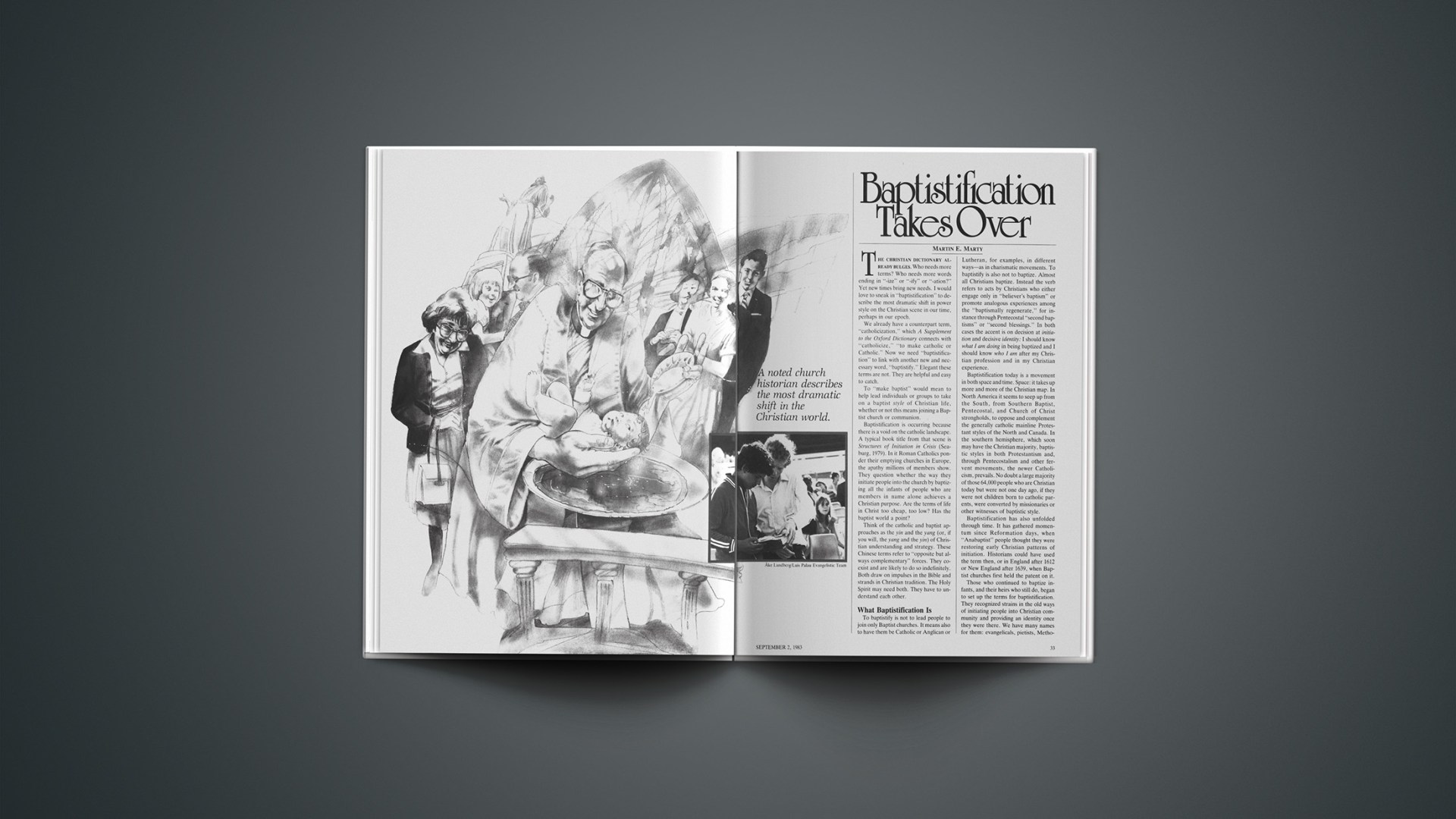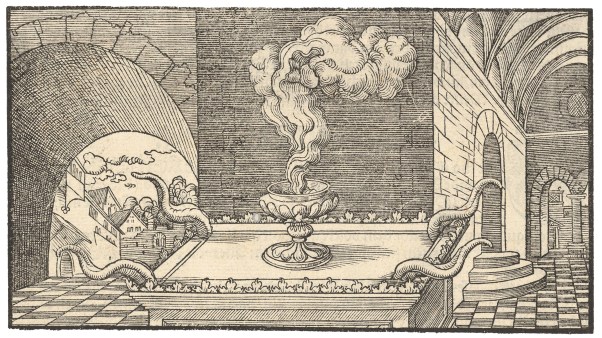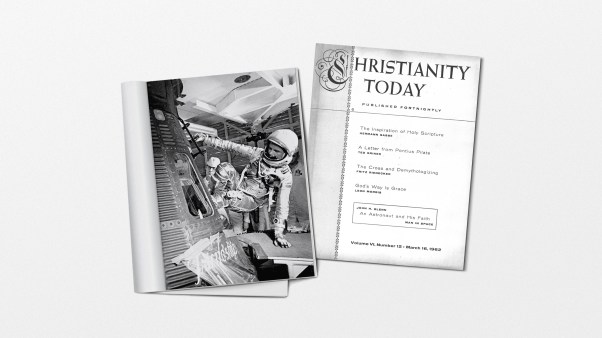The christian dictionary already bulges. Who needs more terms? Who needs more words ending in “-ize” or “-ify” or “-ation?” Yet new times bring new needs. I would love to sneak in “baptistification” to describe the most dramatic shift in power style on the Christian scene in our time, perhaps in our epoch.
We already have a counterpart term, “catholicization,” which A Supplement to the Oxford Dictionary connects with “catholicize,” “to make catholic or Catholic.” Now we need “baptistification” to link with another new and necessary word, “baptistify.” Elegant these terms are not. They are helpful and easy to catch.
To “make baptist” would mean to help lead individuals or groups to take on a baptist style of Christian life, whether or not this means joining a Baptist church or communion.
Baptistification is occurring because there is a void on the catholic landscape. A typical book title from that scene is Structures of Initiation in Crisis (Seaburg, 1979). In it Roman Catholics ponder their emptying churches in Europe, the apathy millions of members show. They question whether the way they initiate people into the church by baptizing all the infants of people who are members in name alone achieves a Christian purpose. Are the terms of life in Christ too cheap, too low? Has the baptist world a point?
Think of the catholic and baptist approaches as the yin and the yang (or, if you will, the yang and the yin) of Christian understanding and strategy. These Chinese terms refer to “opposite but always complementary” forces. They coexist and are likely to do so indefinitely. Both draw on impulses in the Bible and strands in Christian tradition. The Holy Spirit may need both. They have to understand each other.
What Baptistification Is
To baptistify is not to lead people to join only Baptist churches. It means also to have them be Catholic or Anglican or Lutheran, for examples, in different ways—as in charismatic movements. To baptistify is also not to baptize. Almost all Christians baptize. Instead the verb refers to acts by Christians who either engage only in “believer’s baptism” or promote analogous experiences among the “baptismally regenerate,” for instance through Pentecostal “second baptisms” or “second blessings.” In both cases the accent is on decision at initiation and decisive identity: I should know what I am doing in being baptized and I should know who I am after my Christian profession and in my Christian experience.
Baptistification today is a movement in both space and time. Space: it takes up more and more of the Christian map. In North America it seems to seep up from the South, from Southern Baptist, Pentecostal, and Church of Christ strongholds, to oppose and complement the generally catholic mainline Protestant styles of the North and Canada. In the southern hemisphere, which soon may have the Christian majority, baptistic styles in both Protestantism and, through Pentecostalism and other fervent movements, the newer Catholicism, prevails. No doubt a large majority of those 64,000 people who are Christian today but were not one day ago, if they were not children born to catholic parents, were converted by missionaries or other witnesses of baptistic style.
Baptistification has also unfolded through time. It has gathered momentum since Reformation days, when “Anabaptist” people thought they were restoring early Christian patterns of initiation. Historians could have used the term then, or in England after 1612 or New England after 1639, when Baptist churches first held the patent on it.
Those who continued to baptize infants, and their heirs who still do, began to set up the terms for baptistification. They recognized strains in the old ways of initiating people into Christian community and providing an identity once they were there. We have many names for them: evangelicals, pietists, Methodists, revivalists, awakeners. They gained influence in the West and sent missionaries everywhere.
Today, ironically, we call the legacy of these pioneers “the old-time Religion.” In their day these innovators felt attack by old-timers in establishments. They acquired names associated with “new”: New Measures, New Lights, New Sides, New Schools. They zeroed in on the key issue that modernity posed for religion: choice. People began to be “free to choose” to be Christian or not, to choose one kind of Christianity and not another.
The catholic world has ever since been on the defensive wherever aggressive evangelization and then baptistification appeared. Establishmentarians saw their steeples tremble. They heard bells, but these beckoned fewer than before, especially of the young. Competitors instead roused the young and the marginal to decide. Competition became the name of the game.
The process toward baptistification is long-term; we might call it epochal. Its brunt has been felt only recently in many sectors. Before the World Wars the devastation of European Catholicism and catholic Protestantism was not yet so evident as it is now. Statisticians today add up the losses in church participation, while tourists report on the spectacular and spectacularly empty monuments of Christian culture, the churches of Western Europe. As late as the 1950s in America, mainstream Protestants and pre-Vatican II Catholics could coast, or build on old energies during suburban and baby booms.
Catholic Continuity
The catholic style is not disappearing, and is selectively strong. The vast majority of people called Christian are still “born into the faith,” baptized as infants, brought up never knowing of themselves as anything but Christians in environments of Christian nurture and culture. Catholic Christianity has enormous vitalities in the twentieth century. It keeps on producing people with names like Teresa and Camara, Solzhenitsyn and John XXIII, Bonhoeffer and Day. In its name, Christian conservatives can support both Old Order Europe and America and “liberation” in the southern parts of the Christian world. No doubt the better literature, art, architecture, and music of the twentieth-century Christian sphere has come from it. The mark of catholic baptism carries millions through dedicated lives through happy deaths to eternity.
Yet there is crisis. Edmund Morgan once wrote that to the Puritans, godliness passed through the loins of godly parents to children. The Awakeners knew otherwise: that Christian “peoplehood” was more torn up than was Jewish peoplehood. That Christianity no longer “came with the territory.” Christian nurture is interrupted by forces we call pluralism, secularity, and modernization. These distractions pull at family, church, school, neighborhood, tribe—all the forms through which catholic Christianity transmitted itself.
As a result, the young were no longer conscious of the decisional aspect of faith and were denied the depth of Christian experience. Their “Christian” identity was blurred in precisely the period when the search for identity—Who am I? To what do I belong?—was urgent. The church style of the mainline denominations blended with the culture so easily that many had no sense of having made a move from anything to anything. What were the benefits of believing and belonging? What were the threats of not believing and not belonging? Where were the answers to such questions?
The Baptistification Model
Baptistification came with motives, policies, and answers. The Baptists, Churches of Christ, revivalists, and charismatics who were its agent cannot all have been fully “true,” for they represent certainly at least half of the 20,780 “distinct Christian denominations” locatable in the newest Christian atlases. They competed more with each other than with catholic Christianity. They disagreed on countless features of faith. All that united them was their ability to pose stark alternatives between decisions for Christ and nondecision or decision for anything or anyone else. On this they built the understanding that Christian experience was intense. Because of this intensity, authority, usually biblical authority, had to be strong. Given such experience and authority, they had reasons to help make more converts like themselves. Statistically, baptistification became the great new missionary fact of the ecumenical era.
Dean Kelley in 1972 helped readers understand some of the shift. His book. Why Conservative Churches Are Growing, clearly tabbed “conservatism” as the key factor in growth. Yet his work, viewed as a map, left out an important territory. He showed how “strong” groups pushed six features: commitment, discipline, missionary zeal, absolutism, conformity, and fanaticism. He did not show how people came to these six features in the modern world. They did so through a decision that led to initiation, through constant dwelling on that experience, and then through stress on the resulting group identity. In fact, many conservative churches do not grow while literally thousands of radical, upsetting, “prophetic” churches, particularly in the southern world, do.
Orthodoxy has nothing to do with rapid growth on the Kelley gradient. Black Muslims, Jehovah’s Witnesses, Orthodox Jews, Latter-day Saints, and members of the Church of Christ, Scientist, were blended with “orthodox” evangelicals and Pentecostals, and members of the Churches of Christ, Seventh-day Adventists, the Church of God, and the Southern Baptist Convention—not all of whom regard each other as orthodox or conservative—as the boomers. Most of them are of baptistic styles. Meanwhile, among the 15 slow-growing or declining groups, orthodox Christian or not, only the American Baptist Churches could be classed historically in the baptistic mode.
Suggested Explanations For The Shift
It is tempting to use psychological interpretations to explain the modern shift to baptistification. Quite properly. Christians are sinners and saints, but they are also psychosocial beings with certain needs and satisfactions. God made us that way. To fail to understand that or to claim that our bodies and minds have nothing to do with salvation is to be blind or heretical. Of course, we do not have to reduce the notion of salvation to “nothing but” psychology by pointing to the sense of decision, the experience of initiation, the recognition of identity. The Holy Spirit, like the wind, blows where he wills.
Meanwhile, Christian observers and strategists do well to learn what they can about the psychological processes at work. From the time of pioneer Arnold van Gennep through our day’s Victor Turner we have been learning more and more about the power of “rites of passage” at the crucial moments in life. Baptistification consciously or unconsciously recognizes that most people in the past and many in the present welcome the experience of knowing and feeling that they are repudiating their past, their old self. They then thrill, partly in terror and then in “salvation,” as they pass over the limen (the threshold) as initiates, to new identity in communitas, a deep and profound supportive community.
I may be cynical when I read the thousandth “born again” autobiography and see what look like caricatures of the process. The author’s old self was nurtured through Sunday school by godly parents, but now has to be torn apart. The limen may have been provided through careful cultivation at a comfortable Southern Baptist youth camp or campus ministry. The new community “in Christ” may often be a church of beauty queens, football stars, successful politicians, and awesomely materialistic achievers praising the Lord. I may sneer, but the baptistified Christian is not sneering.
It is also tempting to use sociological interpretations. Wayne Meeks’s new The First Urban Christians (Yale University Press, 1983) throws this approach back into history and helps us see why which people made the move to Christianity. Why women, travelers, merchants, people on the way up in social class? To answer that does not necessarily again involve us in “nothing buttery,” as if nothing but social class, status, and restless aspiration were involved. Let the Holy Spirit have the Spirit’s way. Yet some understanding of rootlessness, of the way modernity “chops up” life and forces choice, helps us understand why certain sorts and classes of people make the moves they do.
Here the studies of identity match the psychological studies of initiation. As the modern media of communication screen out Christian signals, as I move from the secure family past to isolated and lonely corporate existence, as I am tossed about by social forces beyond my control, I need a niche to preserve me from chaos, a sense of “persistent sameness within [my]self … and a persistent sharing of some kind of essential character with other” (Erik Erikson). I get this when people in my charismatic group ask, “Have you had the experience?” or when people in my youth circle announce that they, too, have been “born again.” or when we engage in more trivial acts like twisting dials and sending money to this television evangelist as opposed to that, or mount this bumper sticker or that. The scales of baptistification vary widely.
The Two Styles Are Complementary
The two styles, catholic and baptistic, are not completely separate and do not appear in chemically pure form. They draw on the common Christian story of God’s activity in Jesus Christ, witnessed to by the power of the Holy Spirit in the Scriptures and the testimony of believers through the ages. The two approaches. yin and yang in a way, are both opposed and complementary. I hope it is the historian in me and not someone wishy-washy that urges the need for both styles if the church is to be healthy, open, developing, and interactive. The economy of God is not all invested in the same psychological and sociological modes. I. for one, may admire, learn from, and stand in awe of baptistifiers, but I cannot “be” one. Needless to say, they may remark the same of the catholic style.
Not only Roman Catholics experience Structures of Initiation in Crisis. In Reformed Christianity, notably under the guidance of giants like Karl Barth and Jürgen Moltmann, there is questioning of infant baptism for reasons of theology, convenant, and discipline, if not for the whole baptistic program. The rise of charismatic movements in catholic Christianity is, in one aspect, an attempt to have the best of both worlds. But it is also a sign that its adherents found something missing in the world they had known. Many catholic Christians, Roman Catholic and Protestant alike, try to replicate baptistic impulses to evangelize.
Looking ahead, we might hope that each would borrow the best from the other. Catholic Christianity in its charismatic forms sometimes buys into the more belligerent and less lovely forms of baptistic militancy. Sometimes it also thinks it can raid some techniques from the baptistic world without seeing the theological consequences. There can also be elitist catholic versions of group and movement life borrowed from sectarian versions of baptistic Christianity.
The baptistified world, through some fine evangelical colleges, alertness to art and music, attention to literature (to the point that poor C. S. Lewis is grossly overworked!) is showing an ever-better sense of catholic responsibility for culture as God’s arena. Its social movements have a catholic sense of stewardship of the earth and long-pull attentiveness to human order.
The Creation of Strawberry
Like pin prickly spasms
of flavor jabbing straight through
to the funny knuckle.
Like gentle fire
fueling an inner calm.
Like hope and realization
reached in one chucklesome chew.
Like the red bloom
of blood
on a bloodbrother’s fingertip.
Like grace.
Like God Himself
was chuckling at the time.
—Mark R. Littleton
Irony of ironies, as baptistification brings power and status, it also offers the temptation to acquire less attractive features of catholic Christianity. Baptistic believers for centuries scorned “Constantinianism,” reliance on even the subtlest coercion by the state, the beginnings of privilege by society. Today the calls for “school prayer amendments,” presidentiallv proclaimed designations of “years of the Bible.” public school teaching of “creationism,” and the naming of America as a “Christian nation” usually come from baptistic forces, not from the catholic sectors, which had long cherished the privilege of such influence and at least mild pressure on the state.
In the media world that Christianly, except when the Pope is on the road, is almost entirely baptistic in its mass forms, the temptations simply to borrow the norms of the culture have been so strong that charity forbids documentation here. The baptistification of “born again” entertainment on television is part of the general country-and-westernization of the culture at large. Only the addition of the name of Jesus softens the rock. It is expected to make conscience-free the adoption of the world of success, health, beauty, and prosperity. Hardly remembered, then, is the world of the disinherited from which baptistification took root and strength. This does not mean that baptistifying means keeping people poor, outcaste, marginal “down on the farm” culturally. It does mean asking questions about how to be well-off, prestigious, focal, and civil, whether on farm or in the city—how to be so Christianly.
No doubt some readers will have two questions about this yin and yang approach. Why does the author not decide the issue theologically? Is not a choice between the catholic or baptistic approach, especially to initiation, baptism itself, to be determined by Scripture and the norms of theological truth? Yes, of course. But sufficient to the day are the topics hereof. With libraries full of books and oceans of ink spilled on the subject by better minds than mine, it would be outrageous to think that I could settle issues of “baptismal regeneration” or “believer’s baptism” for others. The concern here has been to say, “Given these two preunderstandings (which Christians bring to the Scriptures) and these two sets of understandings (which Christians carry away from them), how do the two clusters best understand each other and plot the future?”
The other plausible question from baptistifiers could be: Why not say “uncle”? We are winning. You are not of the style moderns seem to want. Since you yourself admire some things we do, why not throw in the towel and give the world only one option? Such questions usually are accompanied by theological truth-claims that are not the main subject of our present concern.
Reasons For Remaining Catholic
The catholic Christian might say, should truth claims come up, that there are counter reasons for remaining in the catholic camp. One cannot make a move solely in the light of what is attractive; to do so might even mean adapting the gospel in order to be relevant, and thus losing integrity.
Catholic Christians would more likely argue for complementarity. They recognize that hundreds of millions of people in the world who are, would be, and in the future will be Christian will not be baptistified.
As a personality issue, many catholic Christians are made uncomfortable, not by the claims of the gospel, but by hard-to-define features that become the scandal. Thus the initiation of believers’ baptism all too early comes to be boasted about (“I found it!”) as an achievement, a mark of one’s sagacity, a credential, and not a sign of grace. The appeal to authority can turn into authoritarianism. The devotion to experience can become narcissism. The call to witness can often become trivial and self-serving monologue. Can, not must.
Given the risks of the baptistic approaches to match the risks of the catholic ones, it strikes many as strategically sound—to match their belief and theology—to keep the complementarity within the church and for the world. That notion itself is catholic, in the deepest senses of the term! This means that catholic Christianity has to recover more vivid ways of initiating. Catholics, Episcopalians, and Lutherans in our time have revised and sometimes minimized confirmation rites so as not to detract from baptism. Yet since these rites often come in adolescence and serve as believer’s baptism does for others, some experience and basis for discipline may be lost. What will take its place?
Catholic Christians have to build on their strengths, for their churches also have boundaries that can give identity. Again, hundreds of millions cherish their part in churches defined by the magnet of Jesus Christ and resist churches defined by high walls and boundaries. They, too, have evangelized and can do so, and their churches, selectively, do grow in size just as they may respond with passion for justice and works of love. Not all their setbacks result from faithlessness! To see declines in what remained of the establishment in Europe and America as something that certifies the truth of another option does not do justice to the faithfullness of so many.
The personal reconstruction of the faithful among catholic Christians begins not by switching camps but by witnessing in clarity and simplicity to the faith that comes with baptismal grace. They, “we,” have learned, though never well enough, to begin each day with the sign of the cross. This reminder recalls baptism, being “buried with Christ” and raised to new life. The day is lived in repentance, the return to baptism, another dying of the old self. It is a passing over the limen or threshold to stronger Christian faith and community, and thus being “born again.” The experience need be no less rich than a single immersion merely because it happens daily. This resurrection of the new self daily is a catholic “being born again.” Where that realization is grasped, there is power and promise.
We do not know what the third millennium will offer. For the moment, baptistification is the more aggressive and effective force, and the circumstances that make it so could prevail for a long time to come. It may succumb, as the worst in Catholicism did, to the temptations that come with its new power and prestige. If so, God could raise up the latent catholic Christians to be the new voice of prophetic upset.
Meanwhile, while we may lack the vision or boldness to see it, the Holy Spirit may be stirring responsive people to a fresh mixture, which will shift the terms for Christian life in the era to follow. There have been such surprises before, including the trend toward the baptistification of the Christian world in our own time. Who can say that the Spirit has written the final chapter?










